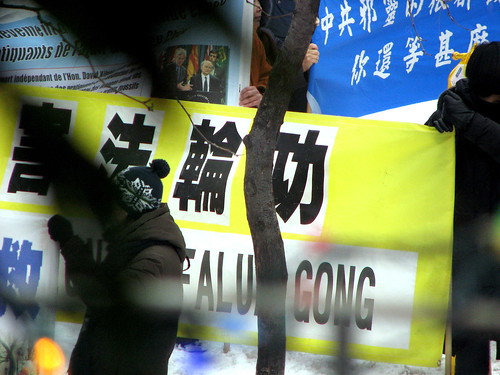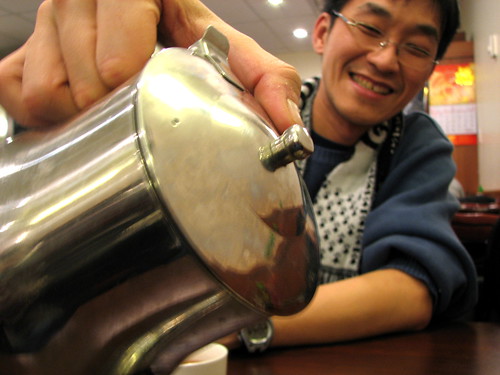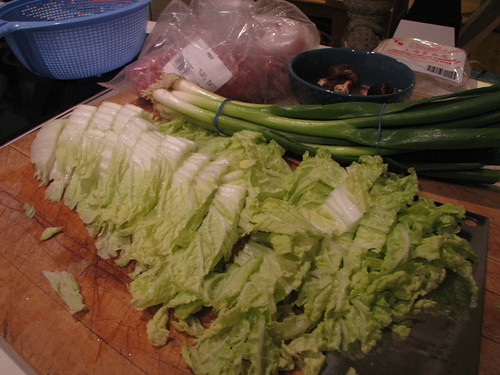[youtube]http://ca.youtube.com/watch?v=xKuy1n1TSZs[/youtube] Sadly enough, the name of this blog comes from a pop song from the 80s. As I was growing up in a Montreal suburb, Mitsou was the hottest star around. Her blond hair, generous shapes, made her the queen of kitsch. But as a boy of Chinese origin, it was her “Les Chinois” song … Continue reading “Non, non, non, c’est pas comme ça”
[youtube]http://ca.youtube.com/watch?v=xKuy1n1TSZs[/youtube]
Sadly enough, the name of this blog comes from a pop song from the 80s. As I was growing up in a Montreal suburb, Mitsou was the hottest star around. Her blond hair, generous shapes, made her the queen of kitsch. But as a boy of Chinese origin, it was her “Les Chinois” song that caught my attention.
Typically, schoolmates would nag me with it, and I would not exactly get it. In it, Mitsou Gélinas tells her lover to quit treating her badly, and to look at the Chinese. Look at the Chinese? For their superior skills? Their outstanding abilities with chopsticks? Their intense gaze accentuated by their slanted eyes? Seriously, what was it all about?
It was alright, because it was Mitsou. She evolved quite nicely in the past years, from being the target of all blonde jokes in Quebec, to a multi-talented radio host, and even television host of her own show about Quebec on the English-language CBC Newsworld called “Au courant”.
The topic of this online publication is alas not Mitsou. Aside from occasional rants, I wanted to offer a separate space, eventually collaborative, for Chinese culture in Canada, Quebec, and in both official languages. I often wanted to find news about the Chinese community here in Montreal, and rarely found it. English-language publications spend sensible time covering the Chinese community, but how about French-language ones?
My personal blog, Smurfmatic, frequently spoke about Chinatown, businesses, and heavy stuff like issues of Chinese identity / multiculturalism, and lighter things like current pop stars in the country of my ancestors. “Comme les Chinois” will try to be that, and beyond!
***
C’est assez triste que le nom de ce blogue dérive d’une chanson pop des années 80. En grandissant dans une banlieue de Montréal, Mitsou fut certainement la plus populaire des stars de l’époque. Sa crinière blonde, ses courbes généreuses en fit la reine du cheesy. En tant que p’tit garçon d’origine chinoise, ce fut cependant la chanson « Les Chinois » qui frappa mon imagination.
En général, c’était mes camarades de classe qui me niaisaient avec, sans que j’en comprenne quoi que ce soit. Dans la chanson, Mitsou Gélinas chante à son amant d’arrêter de la maltraiter et de garder les Chinois à la place. Les Chinois? Pour leurs aptitudes supérieures? Pour leurs habiletés incomparables à manier les baguettes? Leur regard intense accentué par ces yeux bridés? Vraiment, c’était quoi l’affaire?
C’était ok, parce que c’était Mitsou. Elle s’est transformée plutôt bien dans les dernières années, passant de la cible de toutes les blagues de blonde dans la province à une artiste polyvalente, ayant même sa propre émission « Au Courant » sur le Québec à la chaîne anglaise CBC Newsworld.
Le sujet de cette publication en ligne n’est malheureusement pas Mitsou. À part les diatribes occasionnels, je voulais proposer un espace, éventuellement collaboratif, sur la culture chinoise au Canada et au Québec, et dans les deux langues officielles du pays. J’ai souvent cherché des nouvelles sur la communauté chinoise à Montréal, sans trouver.
Mon blogue personel, Smurfmatic, parle fréquemment du Quartier Chinois, de ses commerces et sujets complexes comme l’identité chinoise et le multiculturalisme, et de choses un peu plus légères tels les stars pop chinoises. « Comme les Chinois » tentera d’être tout ça, et plus!





